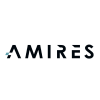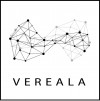'Any definition of the term 'nanomaterial' for regulatory purposes should [...] be based on scientific and technical criteria that uniquely describe phenomena resulting from the spatial confinement of a material,'commences the detailed evidence, which the Nanotechnology Industries Association (NIA) has submitted to the Public Consultation on the proposed SCENIHR Opinion on 'Scientific Definition on the Term 'Nanomaterial'' (the online consultation closed on the 15th September 2010).
The NIA's submission provides detailed comments and evidence, as well as primary scientific references supporting an adaptation of the proposed SCENIHR Opinion to a more scientifically-based approach.
In particular, the NIA does not agree with:
- the proposed number size distribution threshold of 0.15% of the material, for the scientific, technical, and economical reasons
- with the statements that '(i) there is no scientific evidence in favour of a single upper limit, [and] (ii) there is no scientific evidence to qualify the appropriateness of the 100 nm value', because 'nano-specific effects' (i.e. the change of a material's fundamental physico-chemical property as a result of size limitation) are observed below 30 nm. (cf. JRC Reference Report, July 2010)
- with the considerations about risk assessment in this SCENIHR opinion. At the beginning of 2009, the OECDC Working Party on Manufactured Nanomaterials (WPMN) concluded that 'many of the OECD Test Guidelines are applicable, with conditions in some cases, while some are inadequate for testing Manufactured Nanomaterials (MN) as measuring, dosing, delivery and tracking nanomaterials are not reliably accomplished at this stage.' (cf.publication Number 15 of the OECD Publications Series on the Safety of Manufactured Nanomaterials)
The NIA does, however, agree with the following statements made in the SCENIHR Opinion:
- that 'any size mentioned should be controllable and enforceable'and acknowledge the observation that 'for measuring at the nanoscale [...] several techniques are available, which, however, do not always confirm each other', but oppose the association of 'nano-scale' with the range below 1 micrometre in that statement.
- that 'not only is size itself important, but also the method used to measure it' and support the OECD WPMN approach to describing critical physico-chemical characteristics by also prescribing the methods used to determine/measure the size of a nanomaterial and mandate the description of the measurement technique, as provided in the OECD WPMN 'Guidance Manual for the Testing of Manufactured Nanomaterials: OECD Sponsorship Programme'. (cf.publication Number 25 of the OECD Publications Series on the Safety of Manufactured Nanomaterials)
In conclusion (under 'Additional Comments'), the NIA provides an 'Opinion on 'Criteria for the Development of a Definition of the Term 'Nanomaterial''.
Follow these links to find out more about the SCENIHR Opinion, or to download the complete NIA's submission to the public consultation.



















